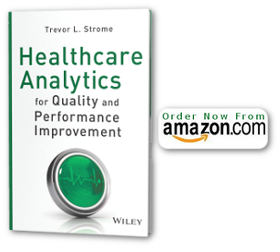Live from St John’s, Newfoundland, Canada
I am attending the Canadian Association of Emergency Physicians (CAEP) 2011 Annual Meeting in St John’s, Newfoundland. It is an opportunity for Emergency Medicine physicians from around the country to meet and discuss the issues and challenges that face Emergency Departments today. (Although I am not a physician, I do a lot of work with Emergency Department data, so I appreciate the opportunity to attend the conference from time-to-time).
Because I work in the field of healthcare analytics and informatics, I usually attend the presentations in the Informatics track of the conference – and these presentations always lead to very interesting discussions. More interesting, however, is to look at the evolution of informatics discussions over the last decade and how it reflects the maturing of informatics technologies in healthcare.
The evolution of healthcare informatics discussions
In the early 2000’s, much of the informatics-related discussions at Emergency Medicine conferences was, “should we adopt an Emergency Department Information System (EDIS)”, or “which EDIS should we adopt”. (I am sure that similar types of conversations were going on throughout the various branches of healthcare).
Approximately a decade later, the conversation is much different now that most major Emergency Departments have implemented (or are in the process of implementing) computerized systems. The discussion has shifted to “how can we use our data”, or more impressively, “how can we optimize the use of our information” (implying that organizations already rely on these systems to enable decision-making based on the information available). I was impressed at how healthcare organizations from across the country (and, in fact, around the world) are using data to improve quality, safety, and flow.
Physician conference not an “informatics love-in”
This conference is definitely not a love-in with informatics, however. Many physicians (even some champions of informatics solutions) bemoan that implementing informatics tools still, in some cases, results in a loss of productivity. Providers are also concerned that, even with new computing power available, much (if not most) of healthcare data is provided in simple tabular format or basic graphs that do not provide any actionable intelligence.
This means that informatics professionals have their work cut for them. System vendors need to develop tools that are in-part designed by clinicians so they work the way clinicians work (not forcing clinicians to work a specific way, as some systems do). Furthermore, healthcare analytics professionals need to step-up to the plate and deliver intelligence that provides true insight into operations, quality, and safety and helps to identify which action to take to address quality and flow issues.
Healthcare informatics – the next ten years
Yes, healthcare informatics and analytics have come a long way in ten years. But, rather than rest on our laurels, informatics and analytics professionals must work harder (and together!) to develop those “killer apps” that will truly revolutionize the way information is used in healthcare. This, in turn, will help enable the healthcare transformation so badly needed to better address the current, and future, needs of patients.

{ 0 comments… add one now }